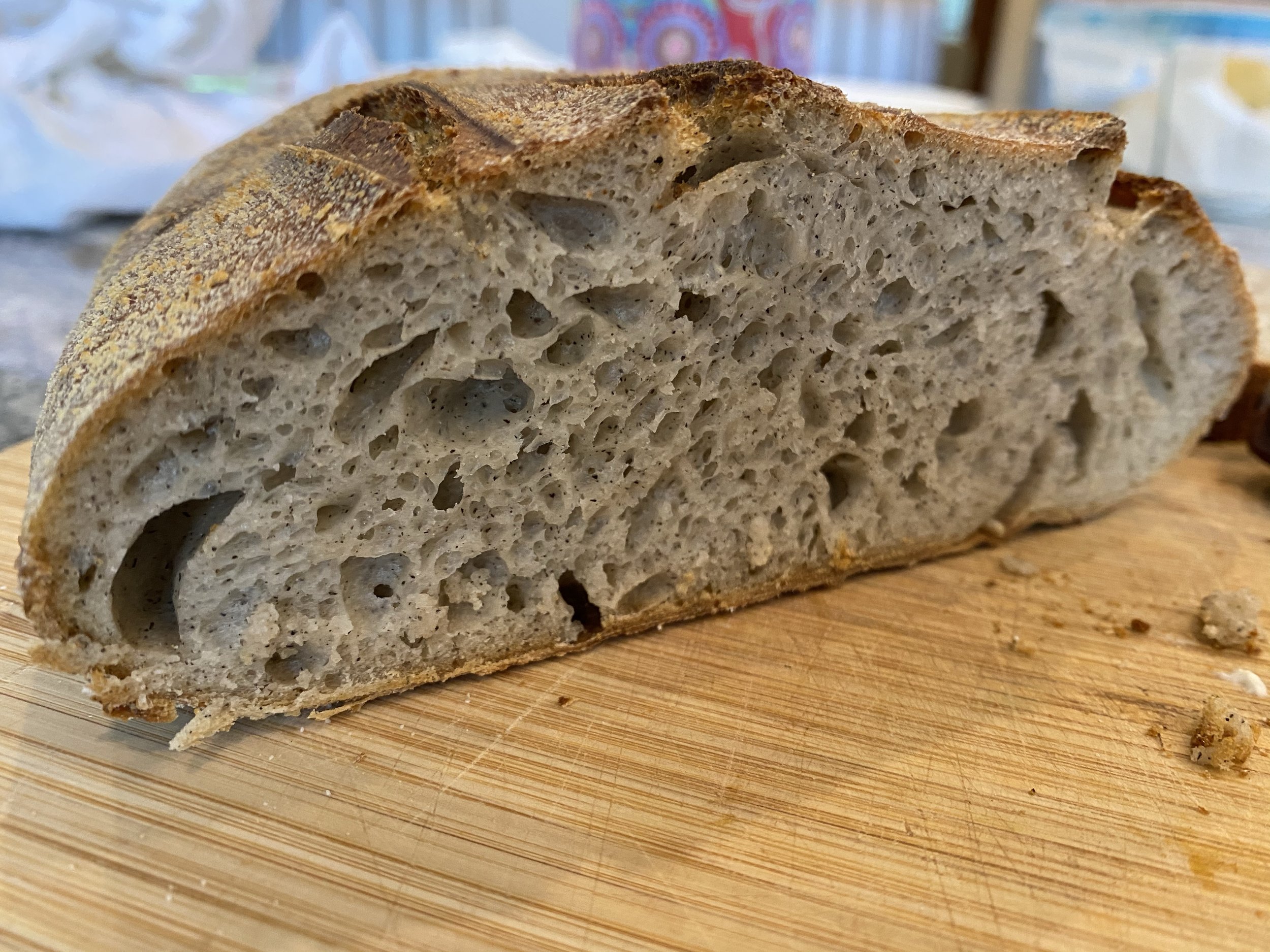20% Buckwheat Sourdough
In the mad dash to hoard flour (and, to be honest, to stuff my virtual shopping cart sufficiently to earn free shipping), I ended up with a two pound bag of buckwheat flour courtesy of King Arthur Flour. I had been curious about the nutty taste so fondly described by many on the internet, but have learned to be dubious as many reviews are clouded by perceptions of "healthfulness" or the context of gluten-free requirements. My only experience with buckwheat had been in the form of soba noodles, and I didn't have such a strong memory that I knew what to expect.
Since I've been regularly producing white sourdough batards with predictable success, I decided to see what adding a moderate amount of buckwheat flour would do. If you've read anything about buckwheat, you'll know that it's not related to wheat, and is technically not a grain. I replaced 20% of the flour in my usual sourdough with buckwheat, and put the dough through it's usual production cycle. I stuck with the 80% hydration base, and performed a series of 6 stretch and folds over the course of 4-5 hours after adding the salt and starter to autolysed flour. One thing that gave me concern was that the dough felt weak and wet. While it built up some strength and bulk during the course of folds, it was noticeably less springy than my all white flour doughs. I suspected this was due at least in part due to the lack of gluten in buckwheat, but it may also be that my buckwheat flour was absorbing less water than the bread flour.
Nonethless, I shaped the dough into a batard as usual (albeit with a bit more difficulty given the dough's lack of strength), and refrigerated it overnight in a banneton. As usual, I cooked it in a covered baker. When I went to uncover the dough after 20 minutes of baking, the differences were immediately apparent. The oven spring was nearly non-existant and the loaf looked disturbingly flat. I suppressed my urge to toss it out and finished the bake.
To my surprise, though considerably less airy than the white flour breads, not all was lost. The texture was decent, and there was a detectable nutty flavor. It wasn't particularly memorable, but it did add a unique flavor profile and was less bitter than whole wheat. I'm not sure I'd seek out the flour in the future for this purpose, but it certainly wasn't a waste. In the future, I'd consider trying a 10% buckwheat loaf and/or dropping the hydration to 70-75%.

